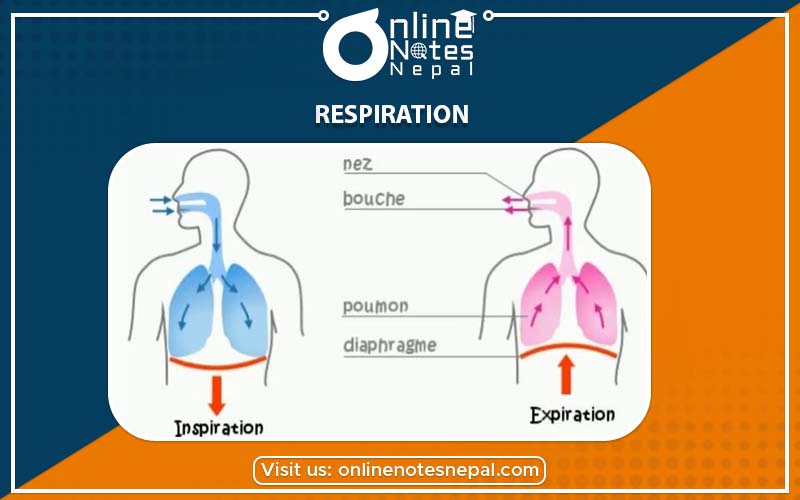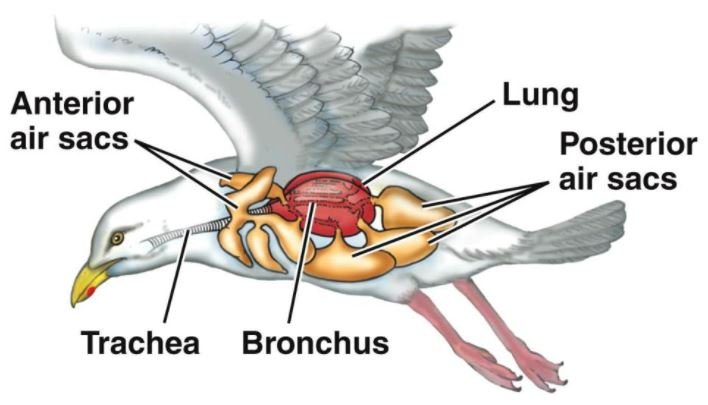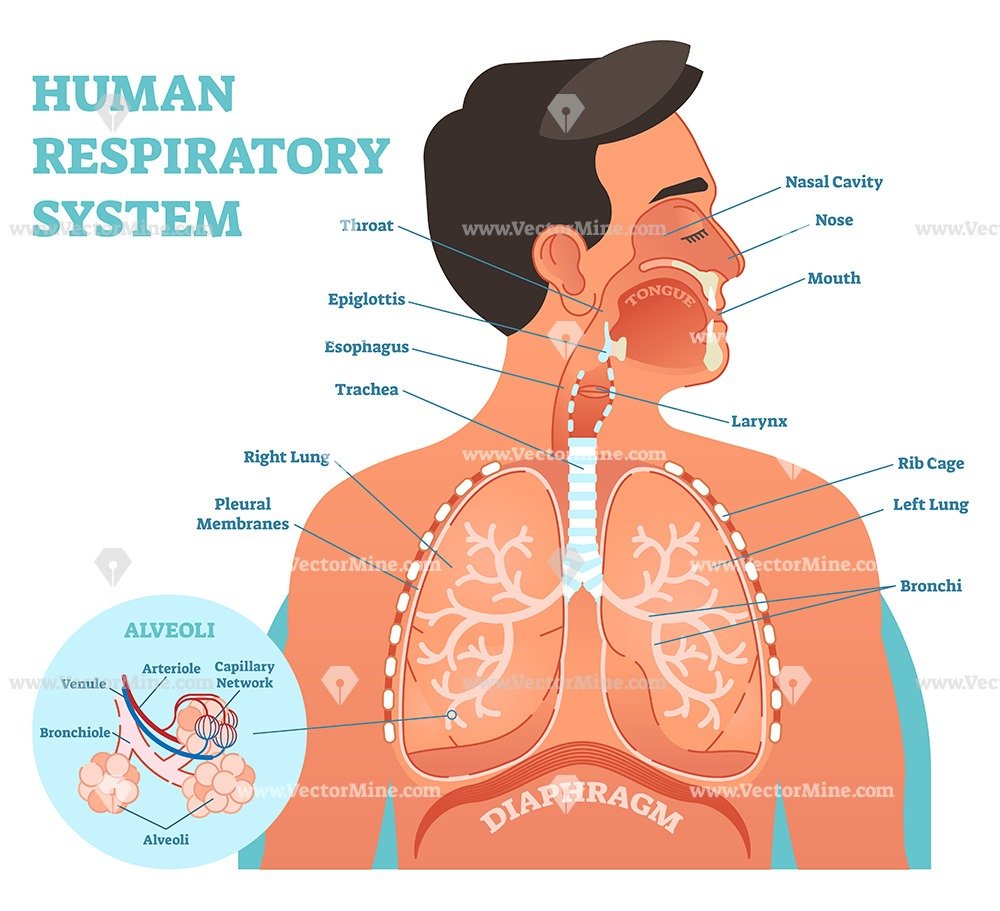Published by: BhumiRaj Timalsina
Published date: 26 Jan 2022

Life processes are the series of actions that takes place in the body of living organisms. This action includes digestion of food, respiration, excretion of waste materials, movement, growth of body parts, reproduction etc. Life processes keep the body of living organisms alive. Life processes occur both in plants and animals. In this note, we discuss the life process that occurs in both plants and animals.
Our body cannot function without energy. We need the energy to conduct various life processes like digestion, excretion, movement, growth of our body parts etc. We eat food for energy. The food provides energy to our body. When we respire, we take breathe in oxygen. This oxygen helps in the burning of food and as a result, the energy is realeased. This energy is used to do various activities. So, the respiration can be defined as the process of releasing energy by the oxidation(burning) of food. Respiration takes place in the mitochondria of the cell.
Animals use oxygen for respiration and plant use carbondioxide for respiration. The simple meaning of respiration means breathing. Breathing is the process of taking in oxygen ans giving out carbon dioxide. Breathing includes two processes. They are inspiration and expiration. The process of taking in air is known as inspiration whereas the process of throwing out air is known as expiration. Respiration is not only the physical process but it isalso the chemical process. When we take in oxygen, the oxygen reacts with the food inside the cells and release energy which is called cellular respiration.Cellular respiration is the process of oxidisind food molecules that results in the release of energy. So, the respiration not only means breathing but it includes both breathing and oxidation of food molecules.
There are mainlt two types of respiration, with oxygen adn withourt oxygen. They are anaerobic respiration and aerobic respiration.
Talking about the respiration in plants, the respiration process in plant is very simple. Plant respire through stomata and lenticels. Stomata are the small tiny opening present on the surface of plant leaves. They lies on the lower surface of leaves. Each stomata is bordered by two specialized bean- shaped epidermal cells known as guard cells.They control the opening and closing of stomata. The stomata plays very important role in exchange of carbon dioxide, oxygen and water vapour in and out of the leaves. In some flowering plants, stomata are also present in stem of the plants. Lenticels are the small pores that are present in the surface of stem and leaves. They are lens- shaped spot that acts as pore. They are responsible for the exchange of gases between the internal tissue of plant and atmosphere. They are present mostly in stem of woody plants.
Unicellular organisms are those organisms which are made up of a single cell. Some of the common examples of unicellular organisms are amoeba, paramecium, etc. Plant respire through stomata and lenticels whereas animals respire through lungs, gills and skin. But talking about respiration in unicellular organisms, there is no such respiratory organ. The respiration in unicellular organisms takes place through their general body surfaces or cell membrane. There is an exchange of oxygen and carbon dioxide through the body surface by the process of diffusion. Diffusion is the process of movement of a substance from higher concentration to the lower concentration.
Now, let us talk about the respiration process in animals.Respiration in animals takes place through lungs, gills, trachea, mouth, skin etc. Different animals have different mechanisms of respiring. In animals also, exchange of gases takes place through the process of diffusion. There are various methods of respiration in animals. They are discussed below,
Cutaneous respiration: Cutaneous respiration is a type of respiration in which animals respire through their skin. There is a dense network of capillaries below the skin that helps in the exchange of gases. The respiratory surface (skin) most be kept moist. Animals like earthworms, roundworms, frogs etc used a cutaneous method of respiration.
Tracheal respiration: In tracheal respiration, the respiration takes place through openings in the body surfaces called spiracles. When the air goes through the spiracles, it passes through the special tube- like structure called trachea. This trachea then divided into many small branches that are connected with muscles and organs. Like this, there is an exchange of oxygen and carbon dioxide between the body and the atmosphere. This method of respiration is known as tracheal respiration. Insects like cockroach, moths, butterfly use a tracheal method of respiration.

Gills respiration: This method of respiration is usually used by aquatic animals. Here, gills is used as a respiratory organ.Gills are thin tissue filaments which are highly branched and folded. Gills are covered by operculum and blood capillaries.These capillaries take up dissolved oxygen in the water and throw out carbon dioxide dissolved in blood.
As we know that frog lives both in land and water. Frog respires through lungs when it lives in water. They respire through the skin during hibernation and aestivation. When they are in the water, they respire through their moist skin.
About the respiration in the human body, various types of organs are involved in respiration process. Organs that are involved in respiration process are nose or mouth, pharynx, larynx, trachea, bronchus, and lungs. At first, the air enters into the pharynx through nose and mouth. The air becomes moist and warm when it passes through the nose. The microscopic hair present in the nose helps to purify the air. Then from the pharynx, it passes into the larynx that is located at the top of the wind- pipe or trachea. The trachea moves downward and divided into left and right bronchus which enters the lungs. There is a pair of spongy, air- filled organs known as of lungs. They are just below the rib cage and above the diaphragm. Lungs is a very important part of respiratory systems.The lungs are covered by a thin tissue layer called the pleura.The right lung is a little wider than the left lung, but it is also shorter.

When the air passes through the larynx or voice box, the air goes down the trachea. The trachea divides into two bronchial tubes known as bronchus. The bronchus enters the lungs of their respective sides and again divided into fine smaller branches known as bronchioles. These bronchioles are connected with tiny air sac called alveoli. There are about 150 million alveoli in each lung. There are that much alveoli in lungs that the alveoli of one lung can cover an area roughly the size of a tennis court. The alveoli are connected with blood vessels and capillaries. This blood vessel and capillaries help in the absorption of oxygen from the lungs or alveoli. They also help in throwing out carbon dioxide from the different parts of the body into the lungs.